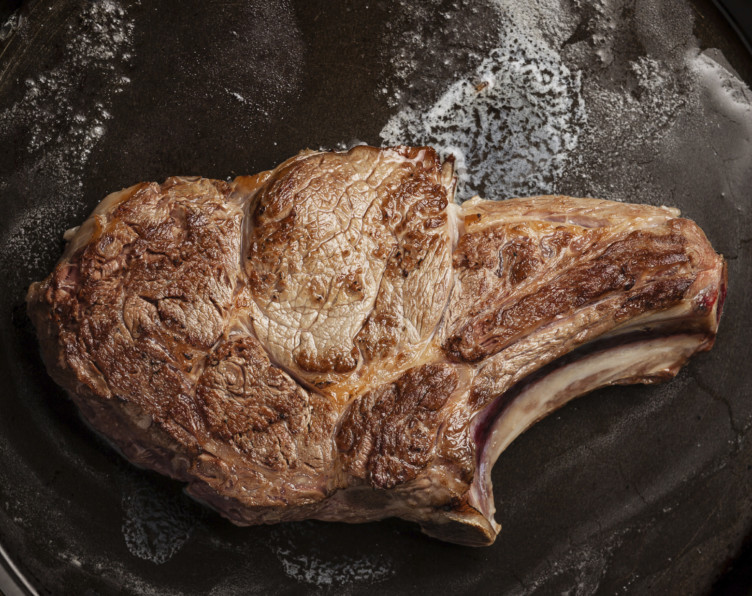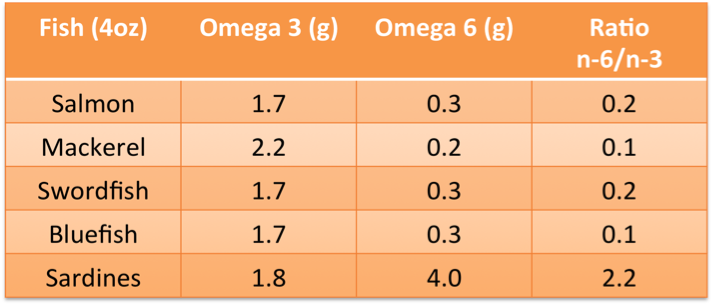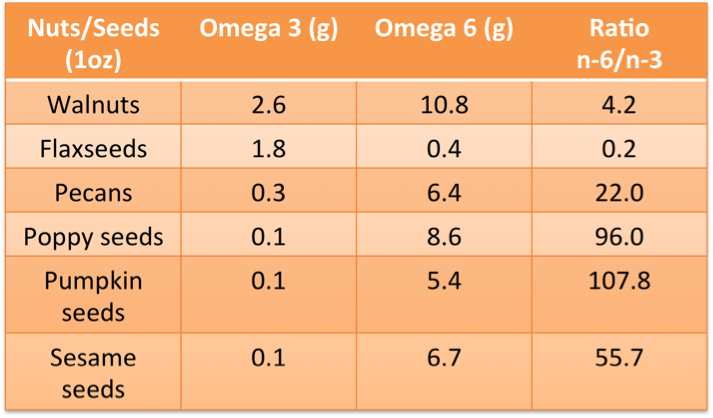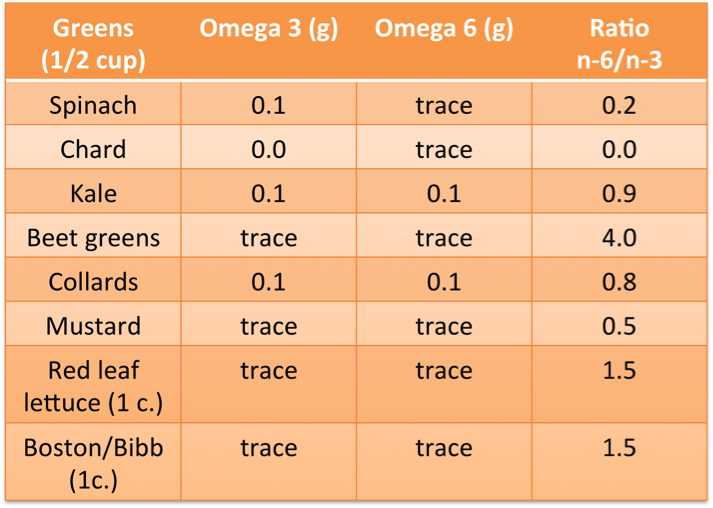The Bulletproof Guide to Omega 3 Vs. Omega 6 Fats

The type of fat you eat is key to your performance — that’s why the Bulletproof Diet suggests eating 50-70% of your calories from fat every day. With that in mind, here’s a quick primer on different types of fat, with a particular focus on Omega 3s, Omega 6s, and how you can balance the two to your body’s advantage, setting the foundation for a Bulletproof life.
Understanding Fat
I specifically designed the Bulletproof Diet to introduce the correct types, amounts, and ratios of fat into your system for optimal hormone balance, weight loss, and wellbeing. Different types of fat behave differently in your body. Most of those differences come down to the shape of the fat’s tail and the stability of the fat.
Check out the tail
Fat molecules look kind of like mice: they have wide bodies with thin tails coming off them. Tail length in fats is important because it changes how your body processes them. As a general rule, the shorter the tail, the more rare and anti-inflammatory the fat itself. That’s why the Bulletproof Diet recommends eating fats with short and medium tails, like those found in grass-fed butter and Brain Octane oil.
Know the fat’s stability
Stability is also important when you’re choosing which fats to eat. The stability of a fat largely depends on how many binding sites it has open. Fats with fewer open binding sites are more stable – they’re less likely to let a free radical oxidize them by stealing an electron. Oxidized fats speed up aging and create inflammation. Here are the three types of fat, from most stable to least:
Saturated Fats
In saturated fats, all the binding sites are filled (“saturated”). Take a look at the diagram of a saturated fat below. It’s like a big dinner table, and each “H” is like a person in a chair. Every seat at the table is taken; a free radical can’t get in anywhere to grab an electron and oxidize the fat.

Monounsaturated Fats
Monounsaturated fats are relatively stable, but they’re not quite as stable as saturated fats. “Mono,” meaning one, indicates that there is one place for a free radical to enter. The table is full except for one seat, as you can see below.

Polyunsaturated Fats
Polyunsaturated fats are the least stable fats. Poly is Greek for “many,” and as the name suggests, polyunsaturated fats have multiple binding sites exposed, making them particularly open to oxidation. Seats at the table are open left and right, and it’s easy for the free radical to get in and mess with the fat.

It’s important to note that just because a fat is unstable doesn’t mean it’s bad for you. You should just handle less stable fats more carefully to make sure they don’t oxidize or spoil. That means avoiding ones that are heavily processed or exposed to high heat.
In fact, two types of the most important kinds of fat are unstable. Omega 6 and omega 3 fats are both polyunsaturated, and they’re key to survival. Your body can’t produce omega 3s and omega 6s on its own; you get them from food. That’s why low-fat diets are bad for you — they systematically deprive you of the fats your body needs to function at its best.
Omega 3s and omega 6s exist in a ratio to one another. There’s a cap on the total amount of the two that the body can use, so they end up competing for space. Omega 6s are inflammatory, while omega 3s are not. You need both, but because of the inflammation factor, it’s optimal to maximize omega 3s and minimize omega 6s.
What makes Omega 3 fats so special?
Omega 3s are great for your cells. They are an integral part of cells membranes throughout the entire body and affect the cell receptors in these membranes.
Omega 3s also provide a launchpad for making hormones that regulate blood, heart, and genetic function.
Studies show that omega 3s help prevent heart disease and stroke, may help control lupus, eczema, and rheumatoid arthritis, and may protect against cancer [7].
Types of Omega 3s
Amazing sources of omega 3s include wild salmon, grass-fed beef, algae oils, sardines, Brussels sprouts, cauliflower, walnuts and flaxseeds. You can also optimize omega 3s through superior fish oil supplements like Krill oil.
There are three common types of omega 3 fatty acids:
- EPA (eicosapentaenoic acid) and DHA (docosahexaenoic acid) – both are long chain omega 3 fatty acids, and both come from animal sources. DHA is the really good one: it keeps your nervous system functioning and provides anti-inflammatory benefits. Higher consumption correlates with improved mood, greater insulin sensitivity, increased muscle growth, and better sleep.
Science has shown that EPA and DHA are especially important for pregnant women.
- ALA (alpha-linolenic acid) – this is a short chain omega 3 fatty acid. ALA comes mostly from plant sources, and most animals can’t really use it, so they convert it to the super-powerful DHA we just talked about.
Herbivores and opportunistic omnivores like mice and rats are great at converting ALA to DHA. Humans, on the other hand, can only convert about 8% of ALA to DHA [18]. That’s one reason why chia seeds and flaxseed oil don’t rank particularly high on the Bulletproof Diet Roadmap. The people selling chia seeds are quick to tell you that their product is high in omega 3s; what they fail to mention is that the omega 3 isn’t the right kind. You still convert some of it to DHA, but getting your DHA directly from animal sources is much more efficient.
Drop those fries and move away from the basket!
So how many omega 3s should you eat to get optimal benefits? It largely depends on your omega 6 consumption.
Omega 6 fats are also necessary for survival, but they’re not nearly as beneficial as omega 3s. Omega 6 fats help with brain function, muscle growth, and hormone production, but they also cause inflammation, and they compete with omega 3s in the body. The ideal is to eat just enough omega 6s to function, but no more, and to balance them with lots of omega 3s.
- For most people, an omega 6 to omega 3 ratio of 4:1 is ideal– that’s 4 omega 6s for every 1 omega 3 [17].
- Anti-aging experts suggest going even further, maintaining a 1:1 ratio or higher in favor of omega 3s.
- The average American eats a ratio of anywhere from 12:1 to 25:1 omega 6 to omega 3 [15, 16]. Not good.
A big reason for the skewed ratio in the U.S. and other countries that eat Western diets is the types of oil in our foods. The most common source of omega 6s is linoleic acid, found in corn oil, soybean oil, safflower oil, cottonseed oil, sunflower oil, poultry, and some nuts and seeds.
These oils are cheap to produce, so many companies use them in processed foods like candy, cookies, crackers, popcorn, granola, dairy creamer, margarine, frozen pizza, and other snacks. Soybean oil is so overused that it constitutes 20% of the calories in the average American diet [9]. Many of the oils are also genetically modified and produced with toxic solvents.
Omega 6 oils are unstable because they’re made of polyunsaturated fats (lots of seats open at the table). Cooking at high heats, microwaving, or frying will oxidize the fats. Oxidized omega 6 does damage to your DNA, inflames your heart, and raises your risk for several types of cancer, including breast cancer. It also interferes with brain metabolism [10, 11, 12, 13, 14].
When companies use these oils in packaged foods, they stabilize them to increase shelf life through a process called hydrogenation. Hydrogenation takes already harmful fats and converts them into synthetic trans fat. Trans fat is even worse for you.
The Omega 3 vs Omega 6 ratio has been abused. The prevalence of vegetable oil and processed grains in Western diets has thrown the ratio way off, contributing to chronic inflammation, cancer, neurodegenerative diseases, heart attack, and many of the other common health problems in the U.S. A core aim of the Bulletproof Diet is to restore that skewed ratio.
Find your optimal fat balance
The fewer inflammatory omega 6s you eat, the more the omega 3s you eat will be able to build and strengthen your body.
Check out these charts to give you added insight into Omega 3/Omega 6 ratios in foods themselves:



To up your ratio, eat plenty low-mercury fatty fish like sockeye salmon, go for grass-fed butter and meat, swap omega 6 oils for those higher in omega 3s, and always check the ingredients when you buy packaged food.
Have you balanced your fat ratio and noticed a difference in how you feel? Any of your own hacks to share with the rest of us? Post it all in the comments, and stay Bulletproof!
[1]http://www.wakehealth.edu/NewsReleases/2006/Trans_Fat_Leads_To_Weight_Gain_Even_on_Same_Total_Calories,_Animal_Study_Shows.htm
[2] http://www.neurobiologyofaging.org/article/S0197-4580(14)00355-8/abstract
[3] http://www.ncbi.nlm.nih.gov/pubmed/23742847
[4]http://newsroom.heart.org/news/trans-fat-consumption-is-linked-to-diminished-memory-in-working-aged-adults?preview=01f0
[5] http://journals.plos.org/plosone/article?id=10.1371/journal.pone.0128129
[6] http://journals.plos.org/plosone/article?id=10.1371/journal.pone.0016268
[7] http://www.hsph.harvard.edu/nutritionsource/omega-3-fats/
[8] http://www.ncbi.nlm.nih.gov/pmc/articles/PMC2621042/
[9] http://www.drweil.com/drw/u/QAA400149/balancing-omega-3-and-omega-6.html
[10] http://aje.oxfordjournals.org/content/147/4/342.short
[11] https://www.physiology.org/doi/full/10.1152/ajpheart.00324.2007
[12] http://www.ncbi.nlm.nih.gov/pubmed/17854706
[13] http://www.karger.com/Article/Abstract/73797
[14] http://www.ncbi.nlm.nih.gov/pubmed/18636564
[15]http://ajcn.nutrition.org/content/71/1/179S.full?ijkey=5c7af875f3dc71a303f7df78c5 2145e8b7c31643
[16] http://cuarts.columbia.edu/tag/alpha-linolenic
[17]http://web.archive.org/web/20100107103119/http://ocw.tufts.edu/data/47/531409.pdf



